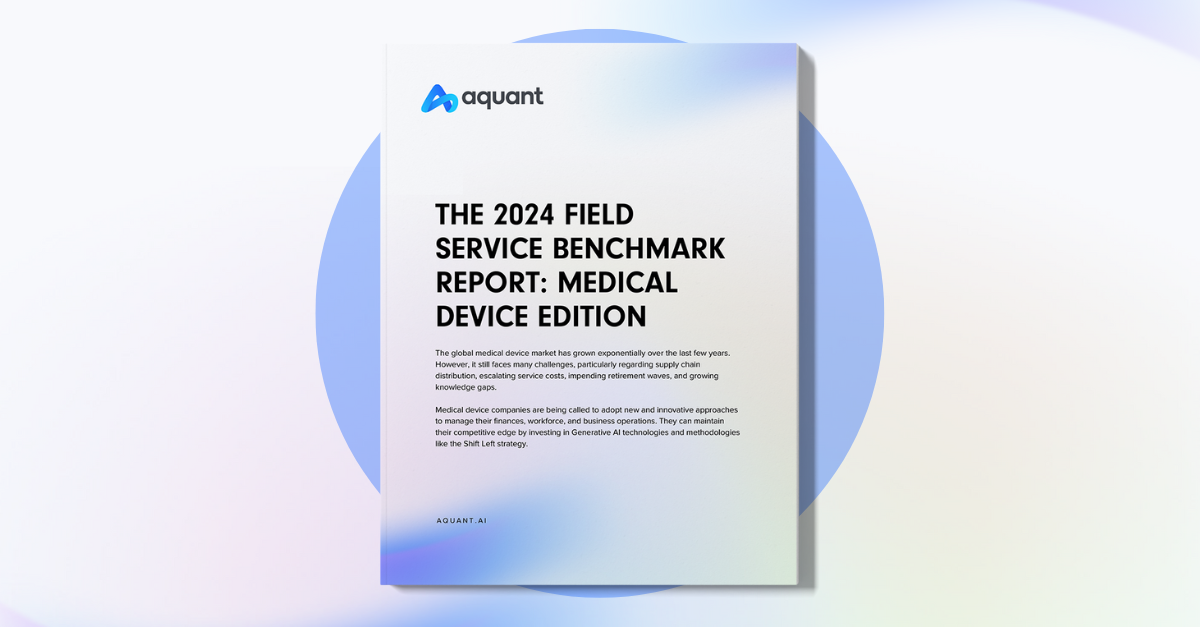Part 2
In the first installment of the blog, we looked at the vast challenges facing the service industry today and the organizational benefits of better gathering and analyzing that data. Today we’re talking about specific ways to capture and use the data that already exists in your service organization.
First, Harness the Data
Service organizations have more data then they know what to do with. That diversity includes CRM, ERP, asset management, part management, dispatch, mobile, and all the tribal information from veteran employees whose mind is filled with your organization’s and customer’s best practices. In addition, there is a large assortment of uncategorized information ranging from free-text data and customer tickets to machine-generated error messages and parts information.
This lack of data integration and inability to capture human knowledge creates a black hole of information. And that lack of insight makes it difficult for service leaders to understand baseline activity, set target KPIs, or understand where they need to improve.
There is hope. There are AI and Natural Language Processing (NLP) solutions that are able to integrate this information into structured data that can easily be put in a database where it can be analyzed and used to form real-time suggestions for service fixes.
Make Intelligent Triage Decisions Before a Technician is Dispatched
Al tools like Remote Triage will enable service agents to quickly triage problems by walking through dynamically generated, intelligent investigations with customers. Unlike decision trees, these investigations are created using smart algorithms that are validated and improved by expert employees and continue to learn and evolve over time.
The more information the agent can prompt the customer to provide, the more effective the solution will be, improving customer satisfaction. That upfront information can be used to suggest self-service solutions or used to send the most appropriate tech to the job with the right parts to fix the problem on the first visit.
GUIDE
Your Dirty Data Secrets: Getting Actionable Insights from Your Data Mess
For service leaders committed to unlocking value from their unstructured data download the guide today.
Use Relevant Information and Stop Shotgunning Parts
Without clear guidance, inexperienced technicians often experiment, swapping out parts until a piece of equipment works again. But that’s costly, and often only works as a band-aid, hiding the true root cause. Swapping parts as a stopgap solution might mean that the underlying problem still remains, prompting repeat visits and mounting client frustration.
If you want to end the parts problem and empower your techs to make cost-effective service decisions, give your entire team access to enterprise-wide information. You might think your best techs, those who complete fixes right on the first visit, are magicians, but what really sets them apart is the tribal knowledge they’ve gathered from years of on-the-job experience.
Right now the industry doesn’t have 20 years to skill up new technicians. What it can do is gather and redistribute institutional knowledge to bridge the skills gap. To do so, look towards AI tools that tap into organizational data to provide techs on-site with the most efficient path to resolution — ultimately increasing client satisfaction while lowering service costs.
Gather More Accurate Data and Transition to a Proactive Service Model
IoT technology is here, but most companies aren’t utilizing sensors in a meaningful way to help them transition from a break-fix model to a more predictive service organization. And experts note that most service organizations are still years away from gathering enough data to embrace the full potential of connected devices to provide deeper insights in real-time.
Many organizations that have adopted IoT technology are receiving more connected device alerts than they are equipped to handle. Sending technicians to sites to respond to false alarms and non-critical issues are driving up their labor costs–far from the increased efficiency
that the IoT movement promised.
The path forward? Put processes and tools in place to triage connected device
alerts and more accurately predict the best courses of action for mitigating risks, allocating resources, and resolving challenges.
With the right data strategies that include everything from traditional data input to human knowledge, your organization can dramatically improve the way it delivers service.
For more information, download the ebook Dirty Data Secrets: Squeezing Out Actionable Service Insights From Hidden Data.
Recent Posts
-

AI and Shift Left Will Propel Success in Medical Device Service, Says New Aquant Report
Read More »March 05, 2024 Janice Camacho -

The Power of AI in Service Management: A Journey Towards Boosting Efficiency and Customer Satisfaction
Read More »February 20, 2024 Courtney Stafford






